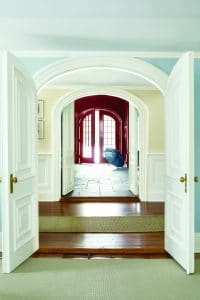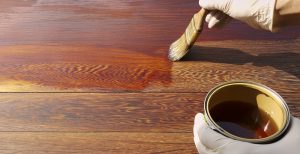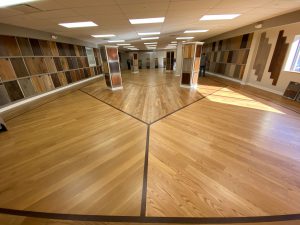Looking to install hardwood in your next flooring project? If so, you should be considering how you want to run the flooring. While the default installation option is usually to run the floors parallel to the longest wall, this is not the only installation option and may not be the one that provides the most impressive visual impact for your project.
The first thing you need to think about is how many rooms are involved in your project. You will almost certainly want all of the flooring to run the same way, which may mean that in some rooms it is not running parallel to the longest wall, even if it is running that way in your largest rooms or entry areas. Consider how the flooring when look in every room while picking out your layout.
Another factor to think about is your light source. If you have a room or side of the house with significantly more light than other parts of the installation, take a look at how the light enters that room. Many people want to run the floors in a way that is parallel with how the light will hit them. That is because light hitting at a perpendicular angle can actually highlight the irregularities and imperfections that are inherent in natural wood flooring. The light hitting parallel to the floor surface can also ensure some of that warm glow that is such an integral part of a natural wood floor.
Other people want to make a dramatic and bold impact with their hardwood floors. Using a pattern in the installation can help you achieve this effect and a good floor designer and installer can incorporate even challenging patterns into the installation. Of course, the more challenging the pattern, the more waste you can expect and the higher the installation costs. That is why many people who are looking for a stunning look without a dramatic price increase look at diagonal installations, which add some visual impact and make a space look larger.
A traditional pattern for wood floors is the herringbone, which greats a zig-zag pattern. This type of installation gives any room a high-end, expensive appearance, looks cutting-edge, but is timeless enough to last for generations. A reputable installer should be able to create a stunning herringbone pattern, but it can be a failure in the hands of less-skilled installers, so expect to pay more for that type of installation. In addition, because it creates extra waste, you will have higher material costs for this type of floor.



